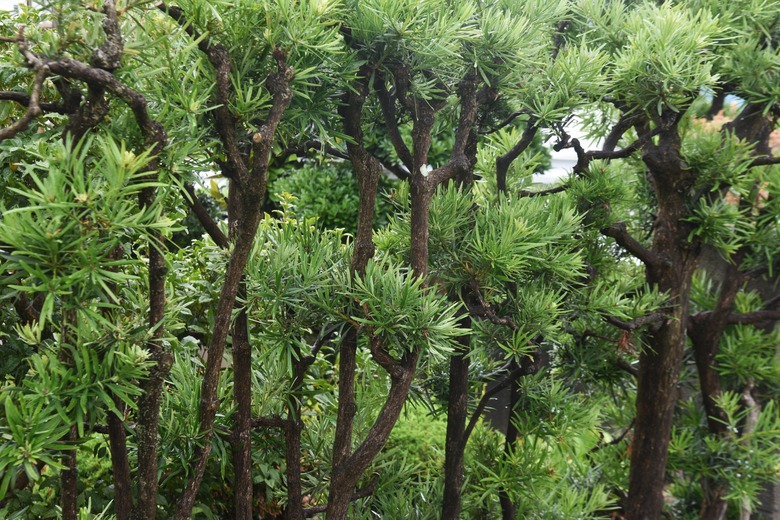How To Grow And Care For Podocarpus
If you're looking for a plant that's easy to care for and can provide a screen of privacy between you and your neighbors in USDA hardiness zones 7 through 9, the bushy growth of a podocarpus (Podocarpus macrophyllus) may be a good choice for you. With basic growing needs and ornamental details, such as cones and berries, to offer, podocarpus can be maintained with minimal care in just about any area and climate condition.
What Is Podocarpus?
What Is Podocarpus?
Originating from China and Japan, podocarpus plants are commonly referred to as Japanese yew for their similarity in appearance to yews, namely their dark green needle-shaped leaves and full, bushy forms. Evergreen and highly adaptable to many environments, these tough and hardy plants can be kept outdoors or indoors depending on the space you have available. Podocarpus are a favorite among landscapers and gardeners for their ability to be pruned into attractive shapes, much like bonsai trees. These plants grow straight and upward naturally to reach tall heights up to 50 feet, and when combined with their dense leaf growth, they're an excellent choice for screening.
Care Tips
Care Tips
Outdoor podocarpus plants are highly adaptable and require little to no care, save for pruning if you wish to maintain a particular shape. They do, however, tend to do best in moderately warm and humid climates, ideally between 50 and 75 degrees Fahrenheit. Podocarpus can go without bright or direct light for long stretches but will grow taller and faster under the bright light of the sun. Like any plant, they do need regular watering, though they can stand long periods with no water, especially if the soil is particularly dense. Brown leaves can indicate dehydration, so if you see the needles of your podocarpus drying up and losing their color, moisten the soil a good amount without leaving it too soggy.
Although these plants do thrive outside, they can be kept indoors in containers, where they stay smaller and more shrub-like in shape. To keep a podocarpus indoors, be sure to raise it in a container with drainage, and let the water run all the way through before discarding what's collected in the dish to prevent possible rotting. Purchase soil that's acidic, and add perlite or sand if the potting mix seems heavy or takes on a clay-like consistency.
Things to Keep in Mind
Things to Keep in Mind
Like yews, podocarpus is known for being toxic to small children and pets, and are generally not recommended for indoor growth if you share a home with either. These plants do thrive outdoors, however, so if you can keep your children and creatures away from their leaves and berries, they shouldn't pose a threat.
